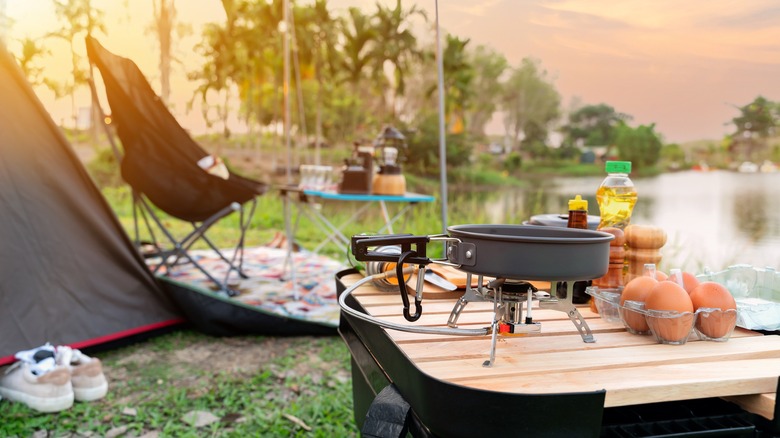Why You Should Bring A Box Of Salt On Your Next Camping Trip
Nowadays, keeping warm when camping isn't the main worry for outdoor enthusiasts. With scorching heat wave after heat wave across the world, the problem today is the opposite: staying cool. Not only do you need to stay cool but, just as crucially, so does your food. A consistently cold temperature will prevent bacterial growth, ensuring your food stays safe to consume.
Ice coolers are designed so that they maximize insulation, but to a point, this only lasts so long. If you're camping close to an ice vendor, you could refill your cooler with new ice every few hours to keep it fresh. But if you want a tip for spending less on food while traveling through the outdoors, avoiding this additional cost is a small but impactful way to do so.
Luckily, there's another simple yet remarkably effective alternative to keeping your packed meals and snacks ice-cold: Salt your ice. The chemical interaction between these two substances can make your ice colder, keeping your food fresher and your wallet fuller.
How to salt your ice (and why it works)
When salt interacts with ice, the two substances undergo a phenomenon known as "freezing point depression," as Science Notes describes. In this process, a substance (like salt) decreases the freezing temperature of a liquid (water). While water typically has a set freezing point of 32 degrees Fahrenheit, combining it with salt can cause the freezing point to drop down to -5 degrees Fahrenheit. By adding salt to the ice in your cooler, you can create an ultra-cold environment that is more resistant to the exterior temperatures.
If you've decided to give the salted ice hack a go, it's easy to follow. All you need is a bag of ice, an insulated cooler, and iodized table salt. Fill your cooler with ice and then generously cover it in an even layer of salt. As TikToker Jimmy Ruttan (@jimmyruttan) explains, ¼ of a 35-ounce box is a solid amount. You can even add a piece of wood on top of the ice to insulate it as Ruttan does, making that the "freezer portion" and the top part the "fridge portion." With this trick, you can say hello to perfectly chilled fruits, sandwiches, and beverages after a long day of exploring the outdoors.
